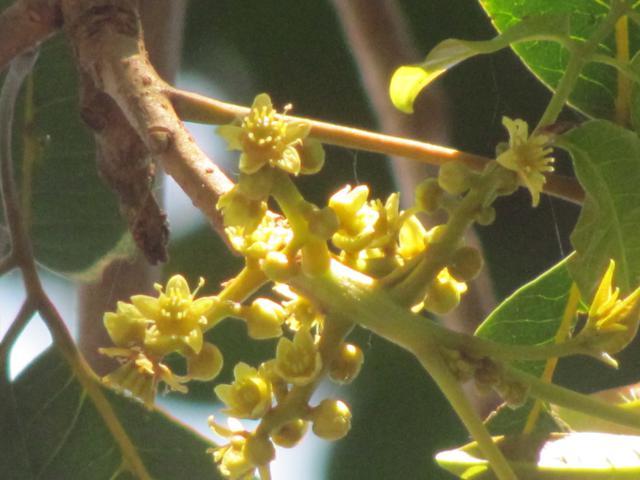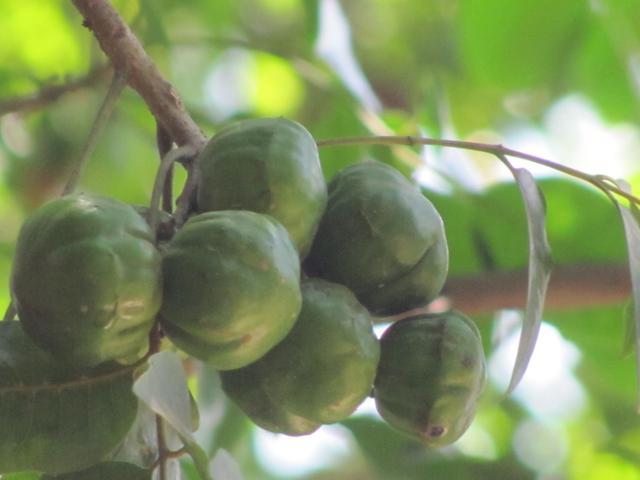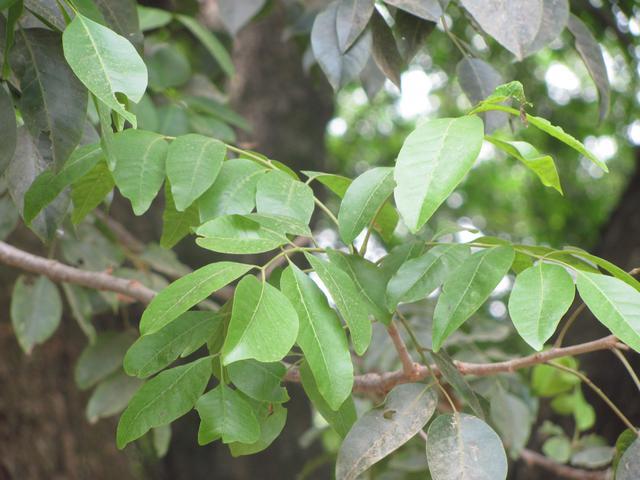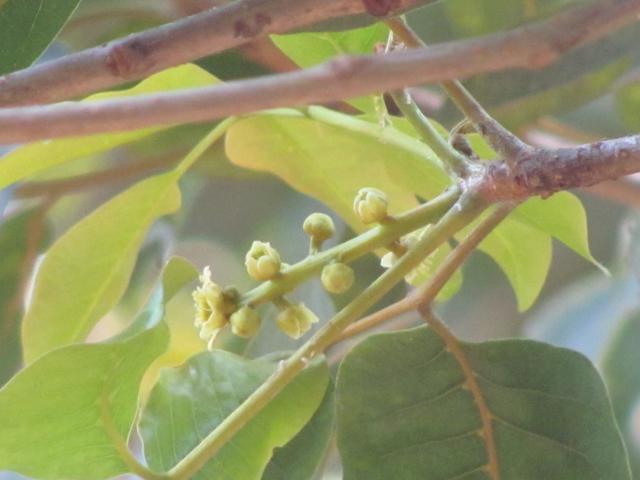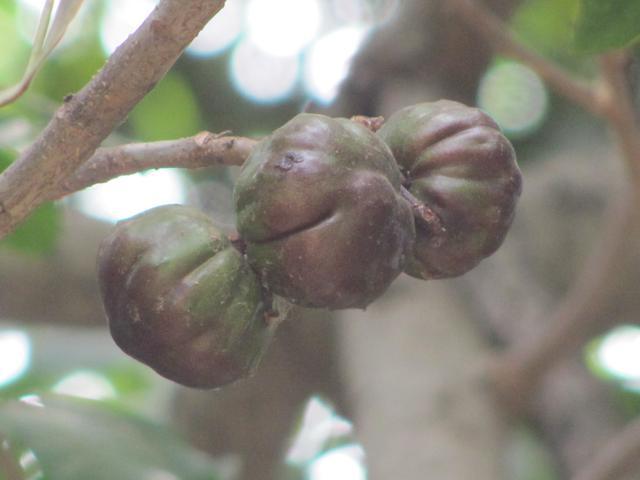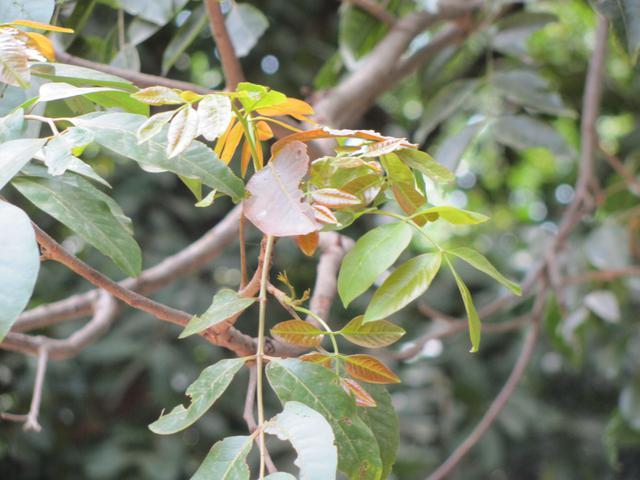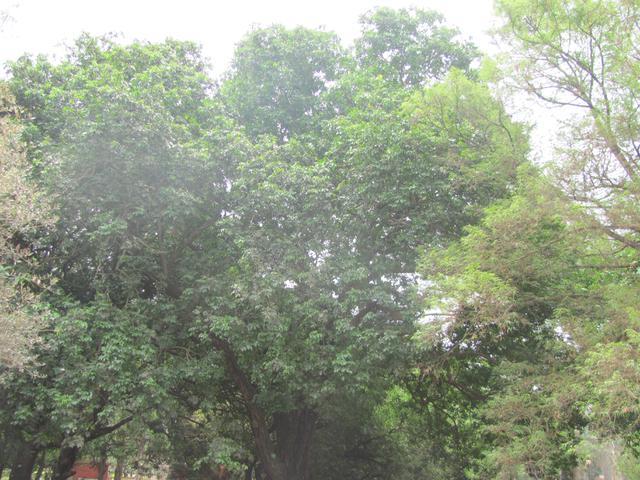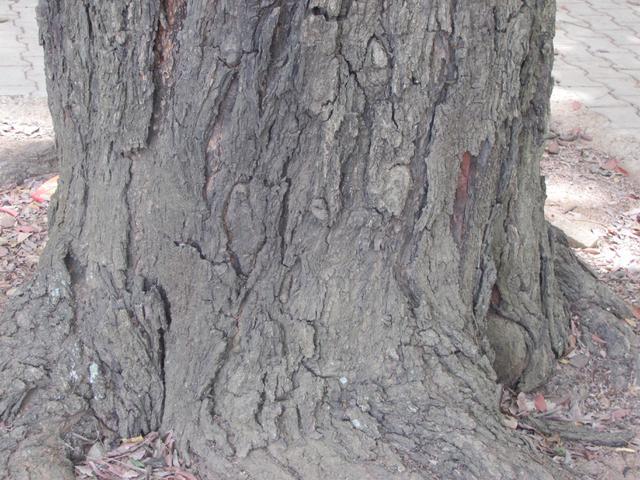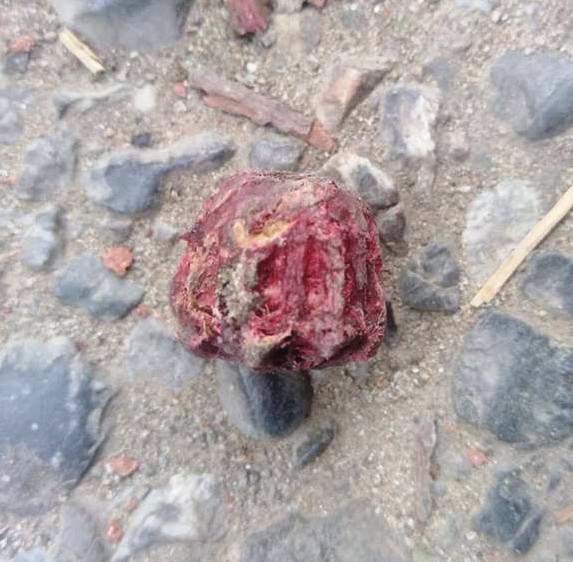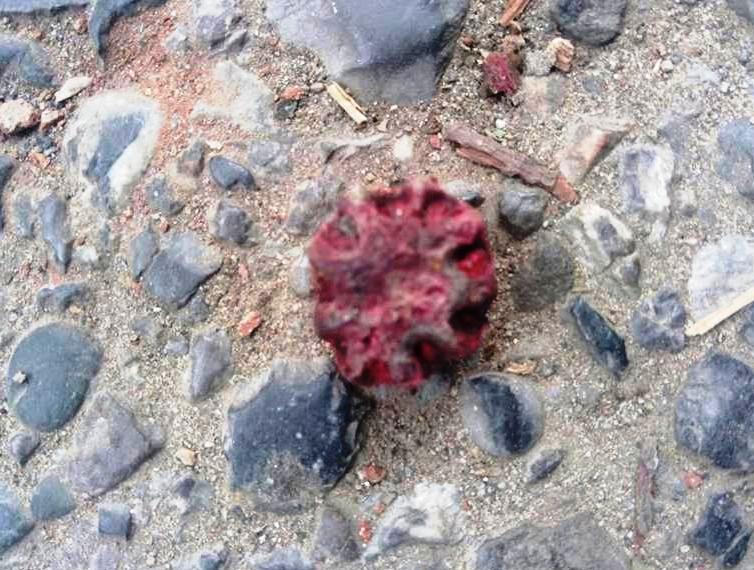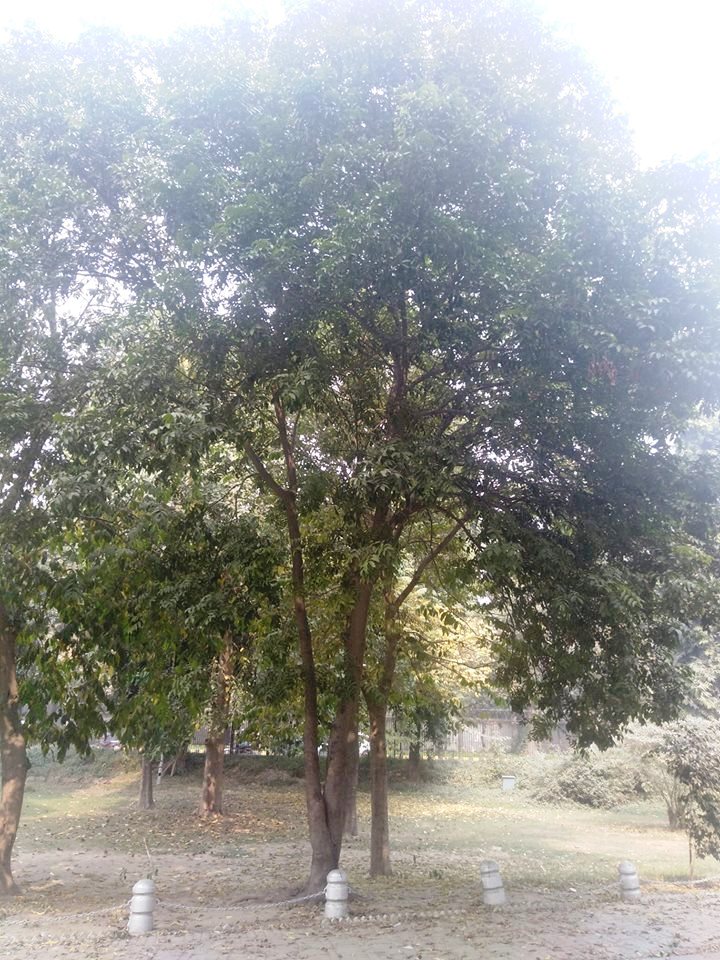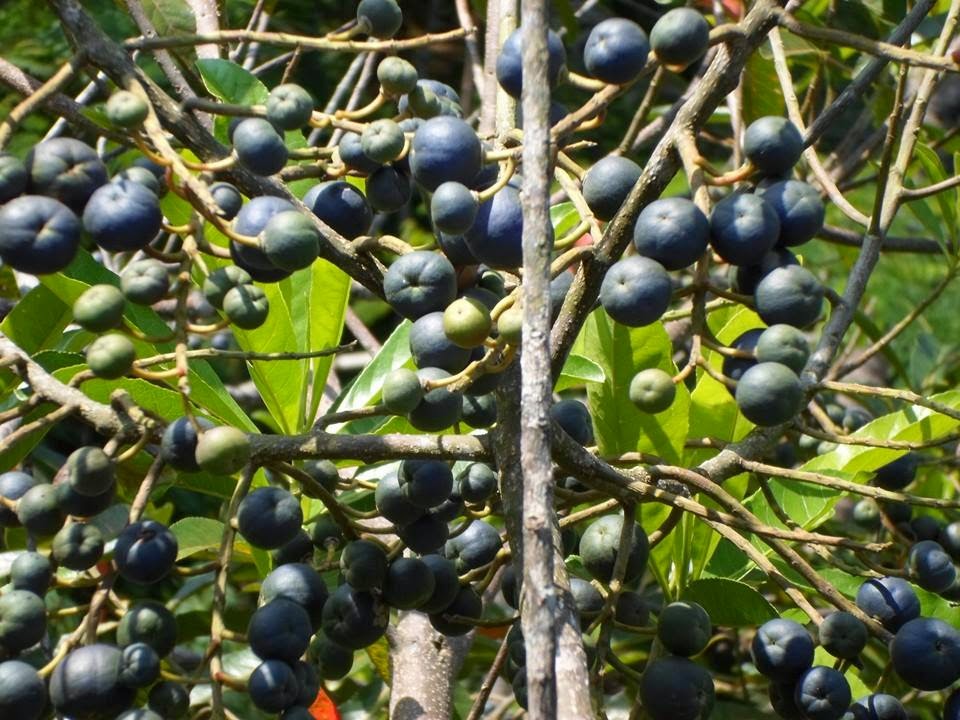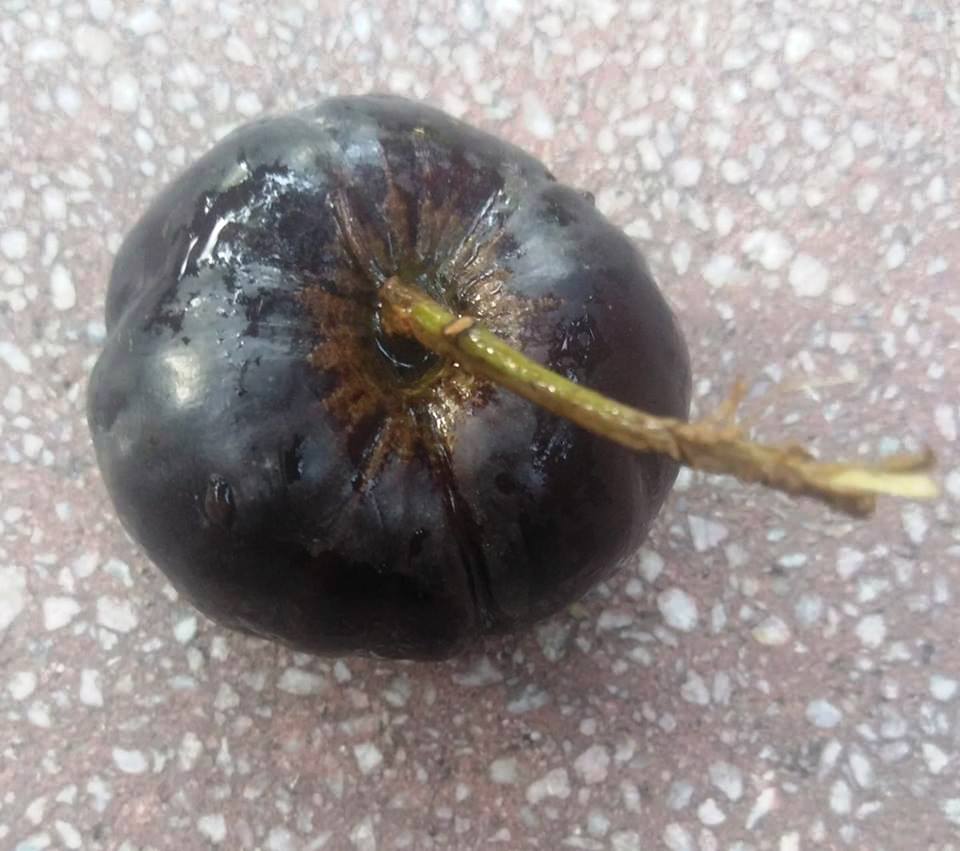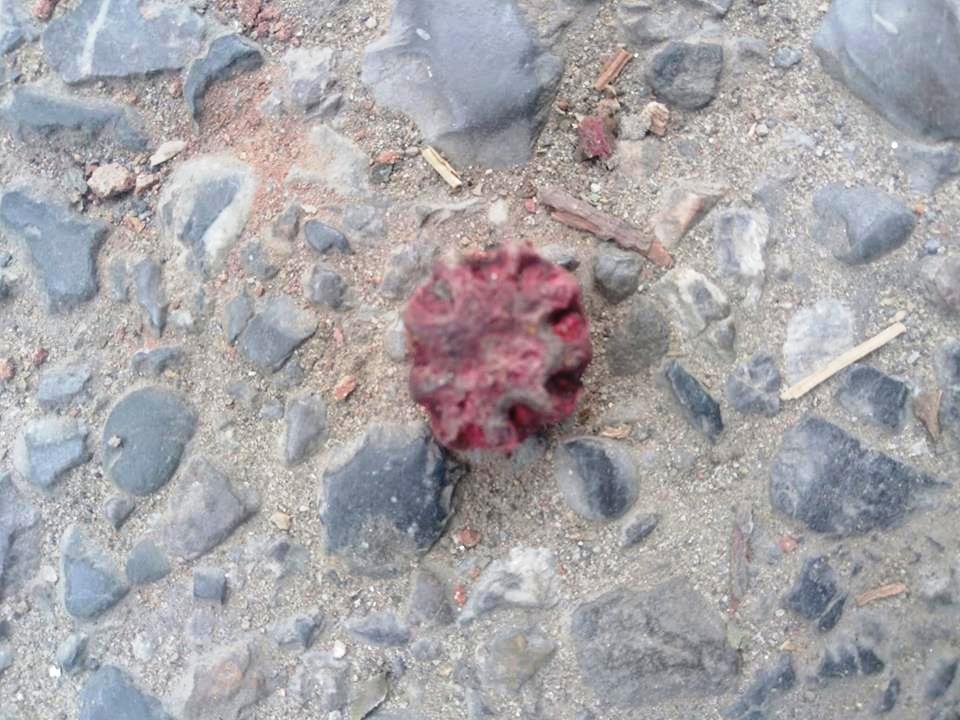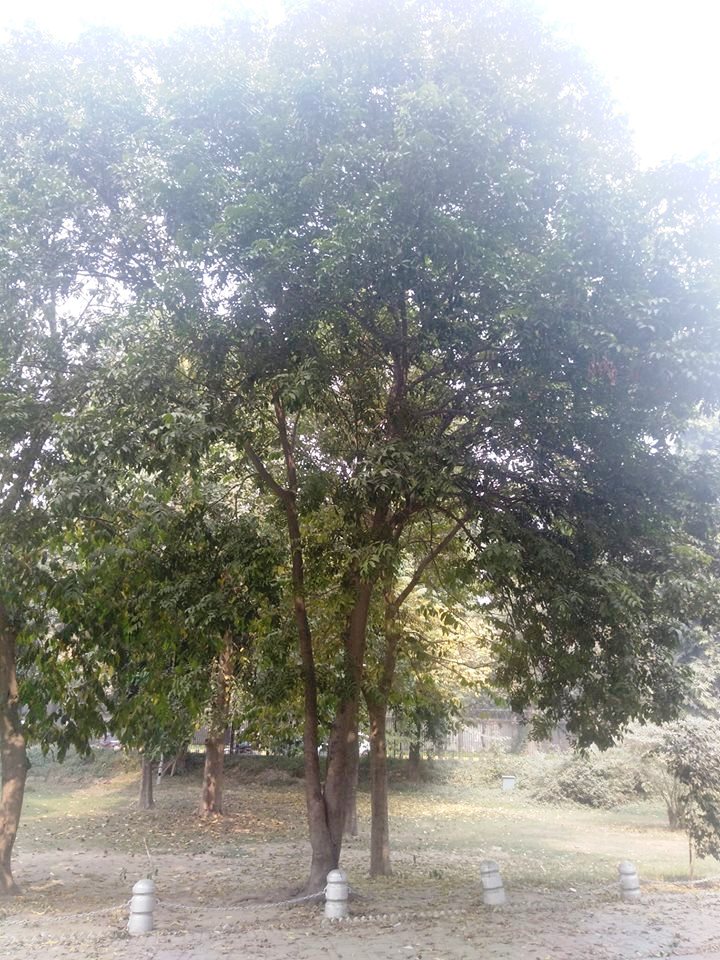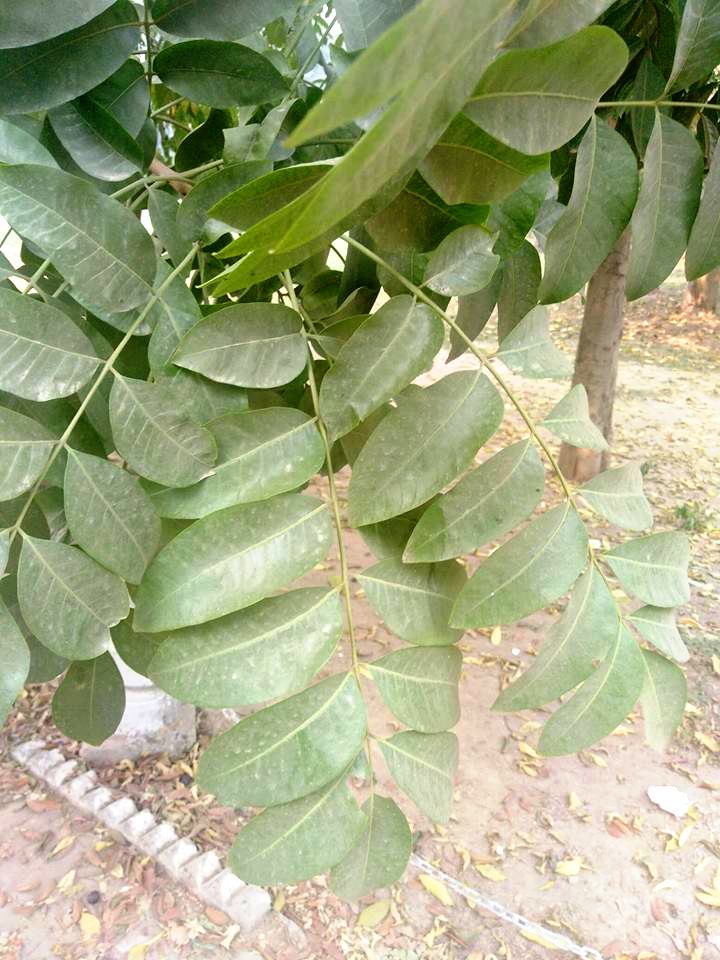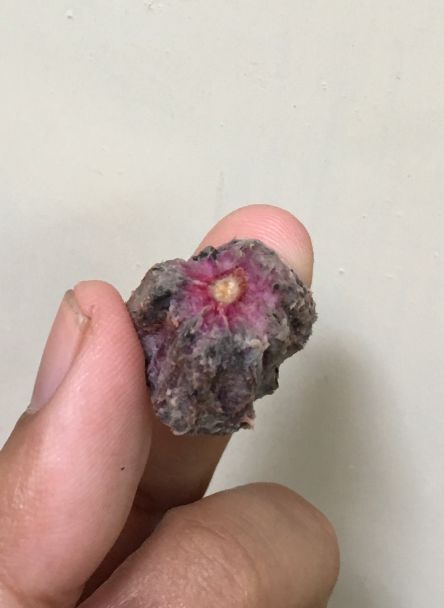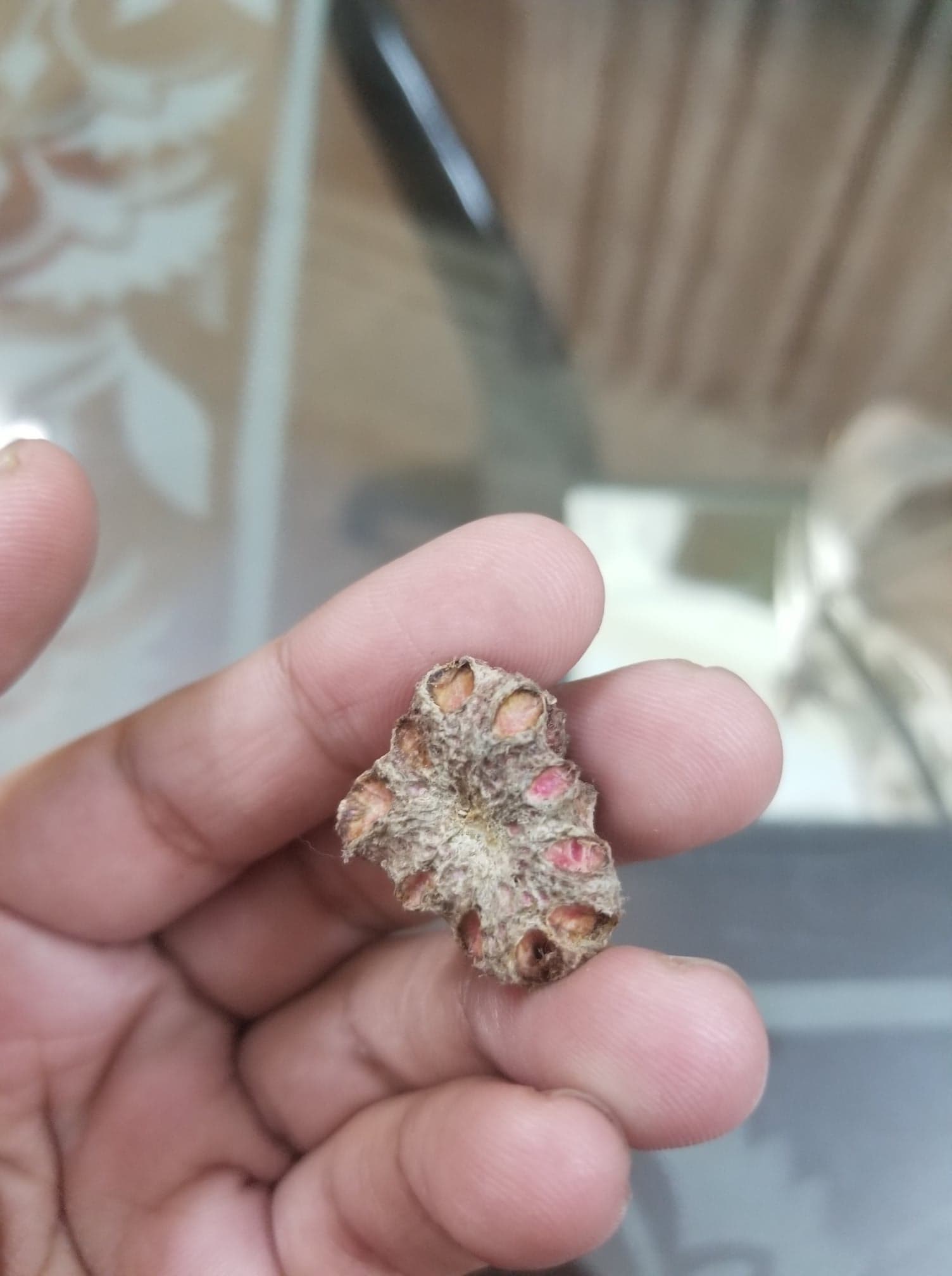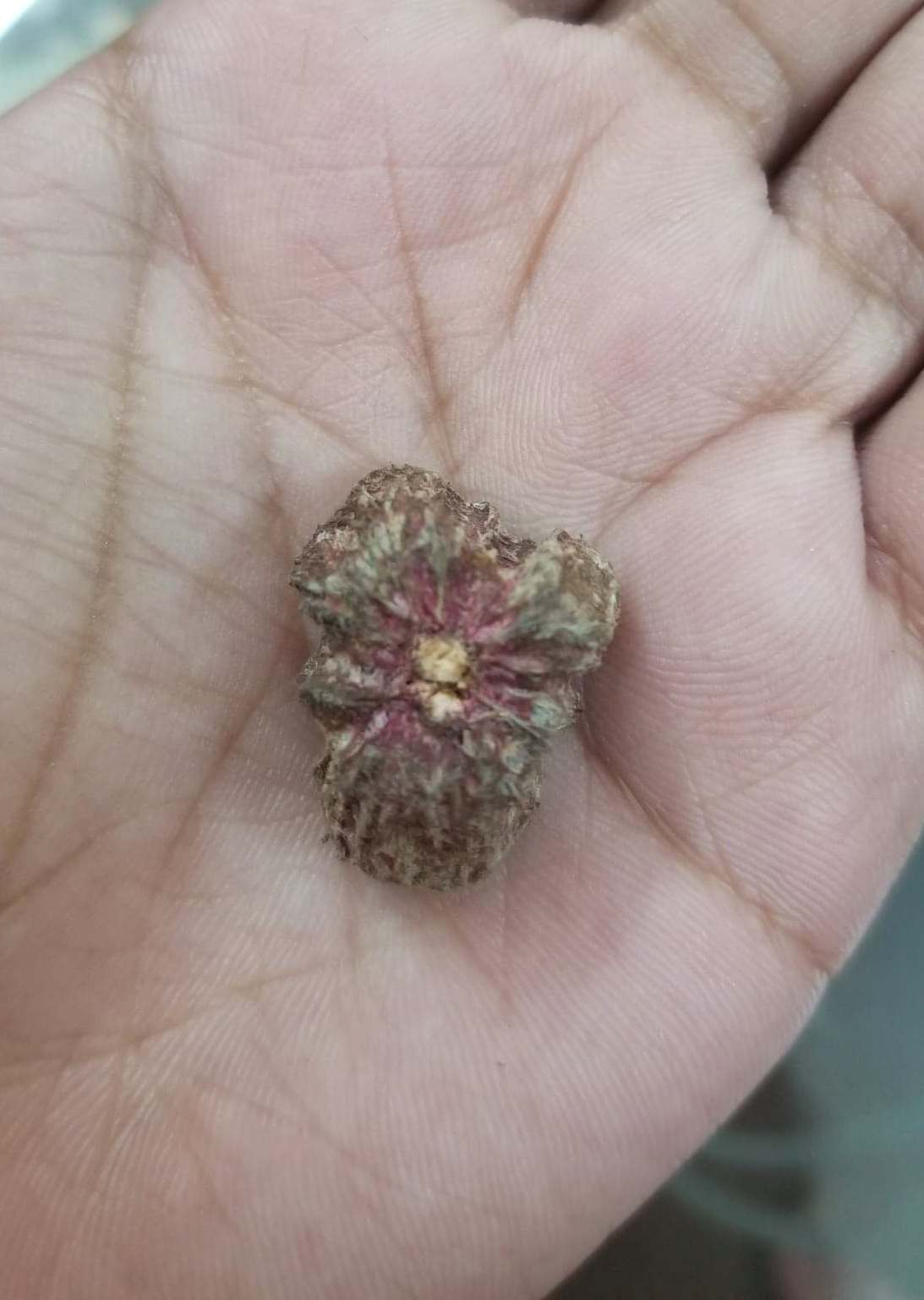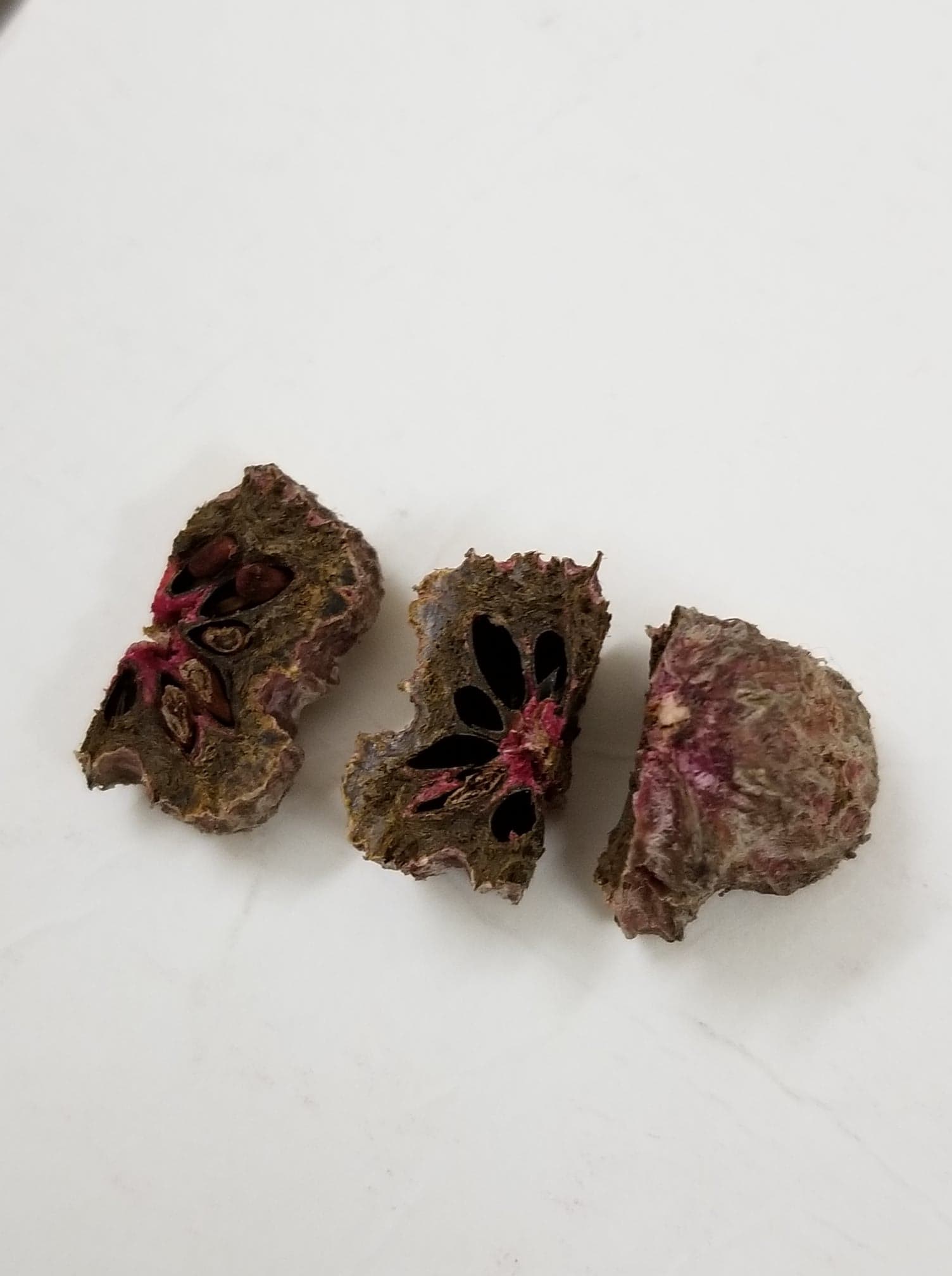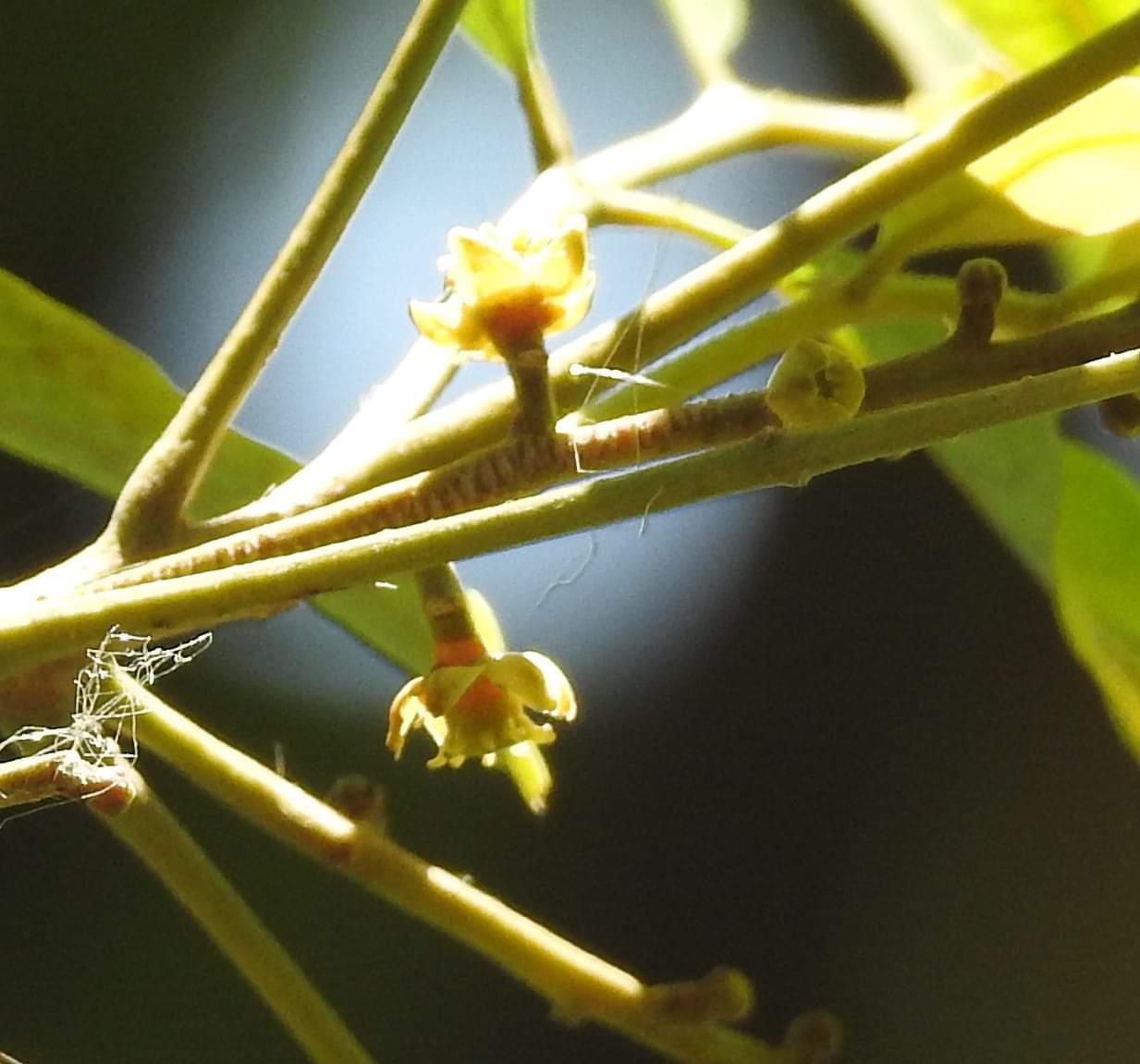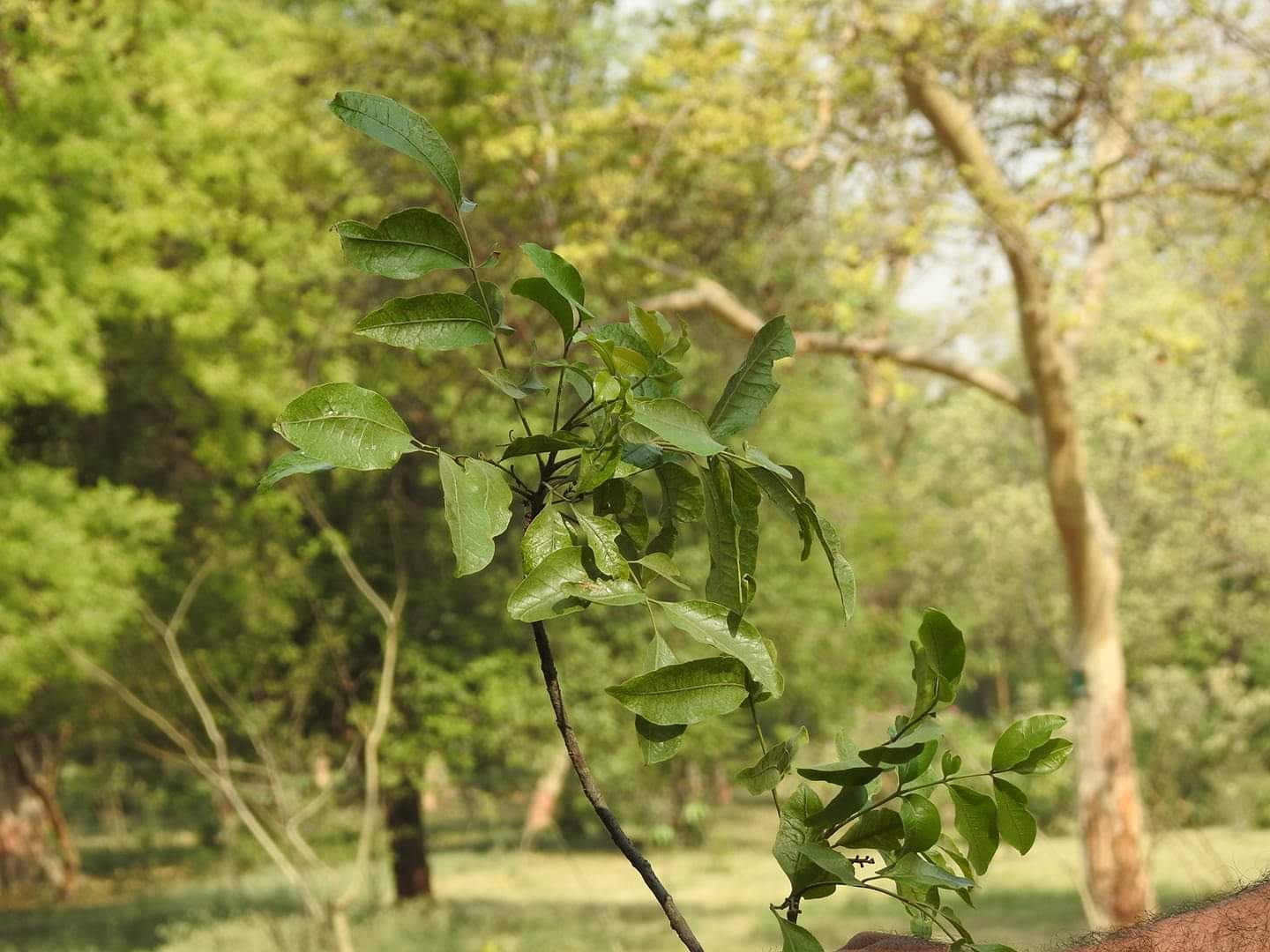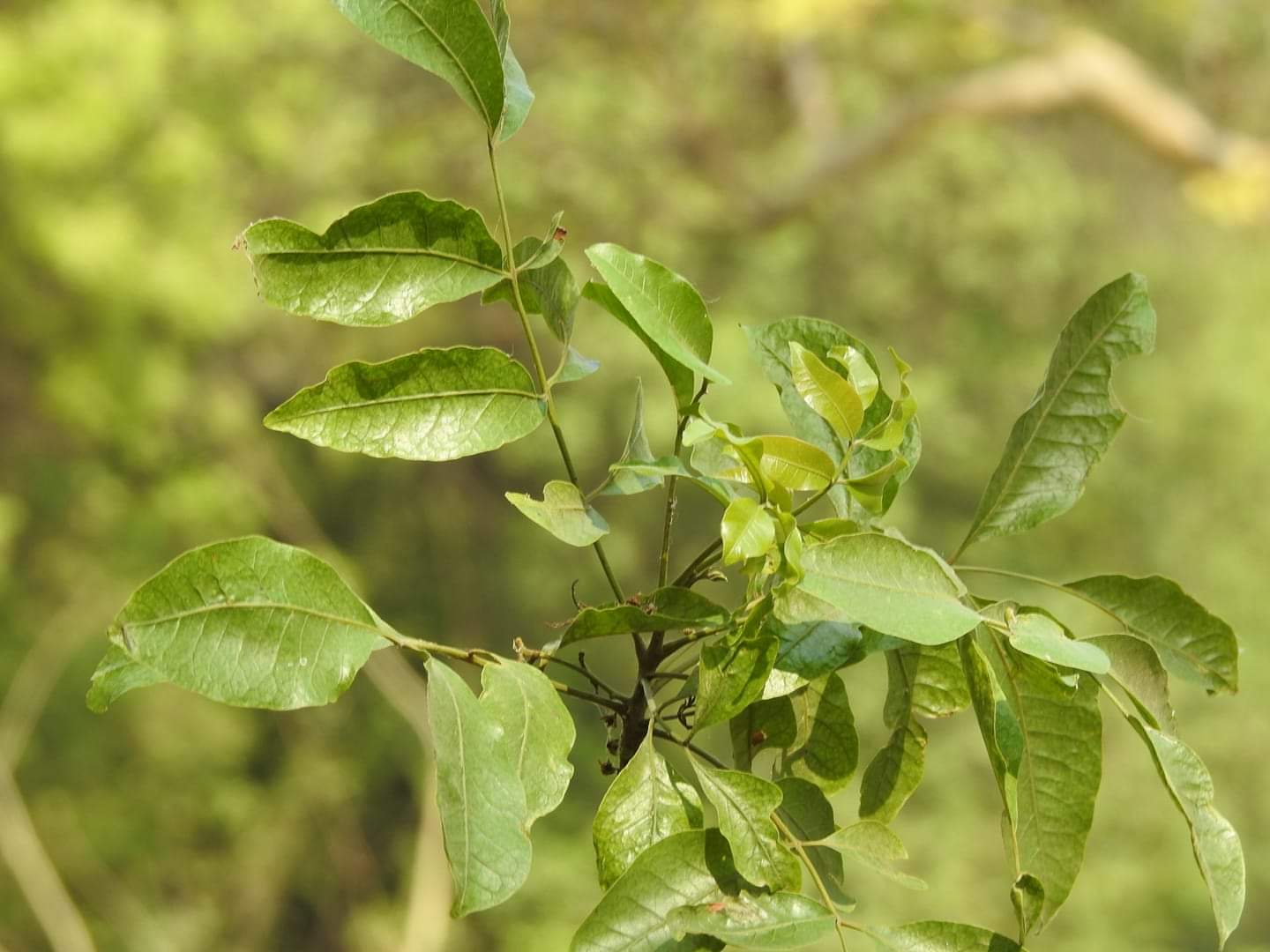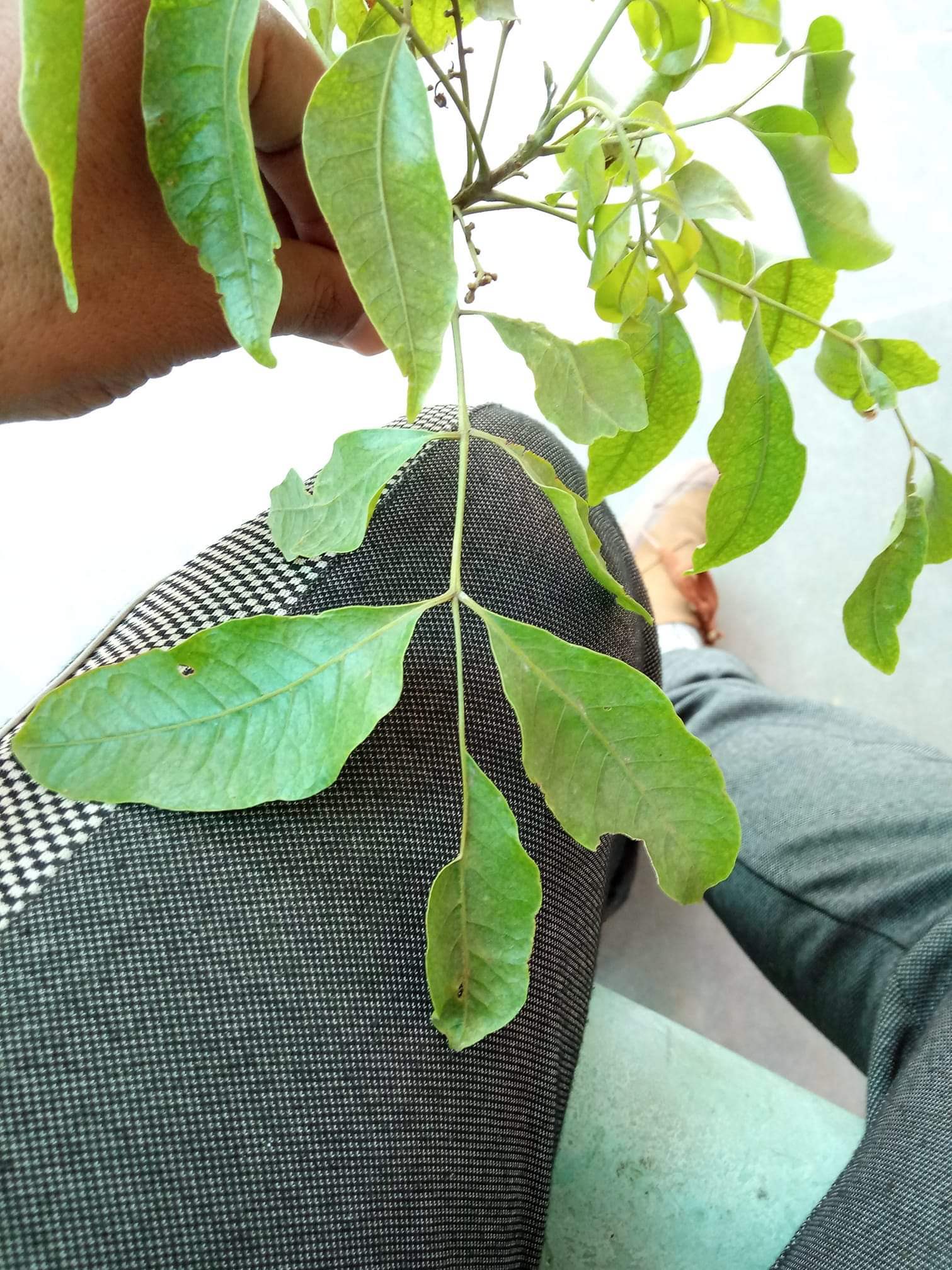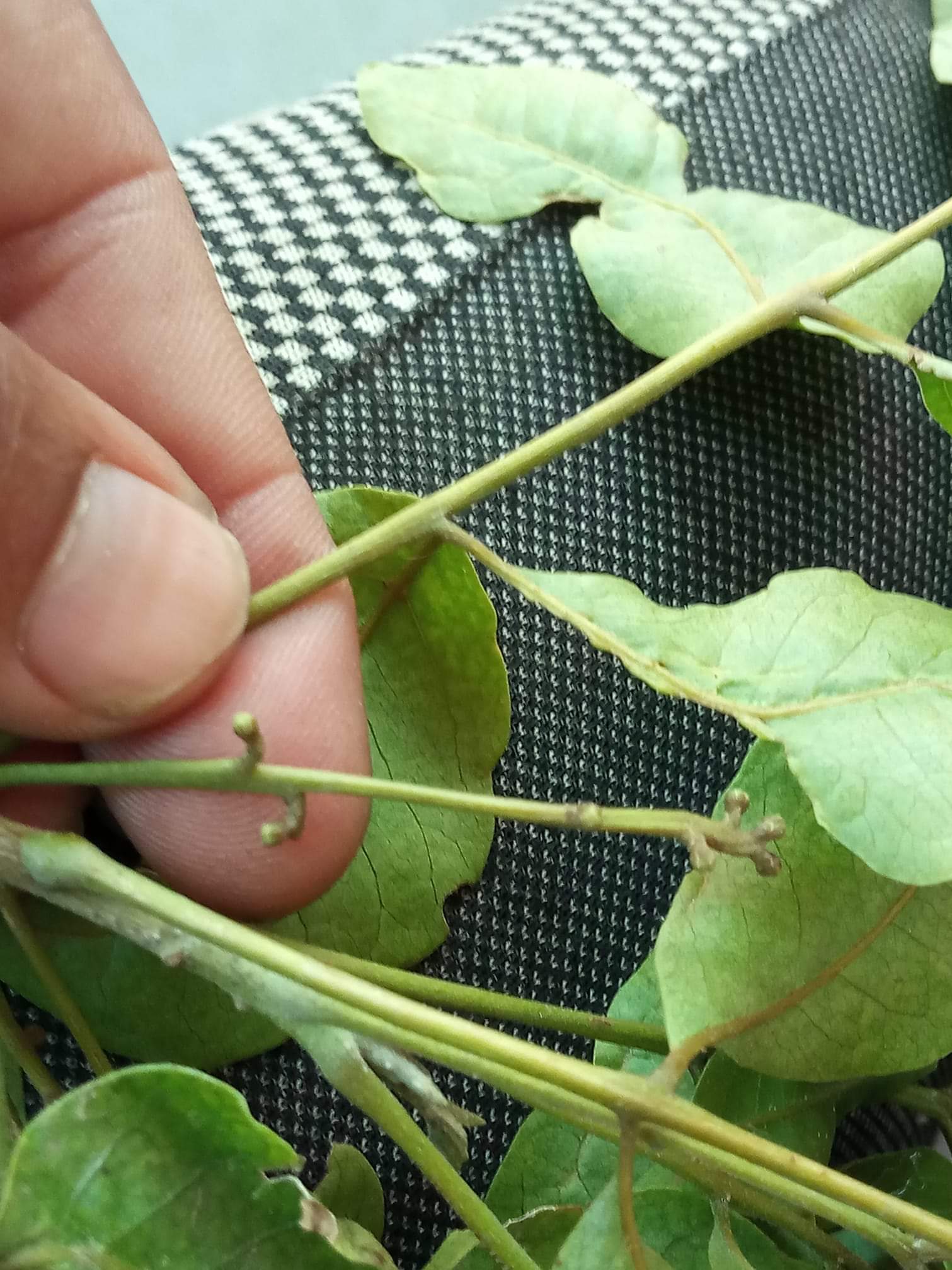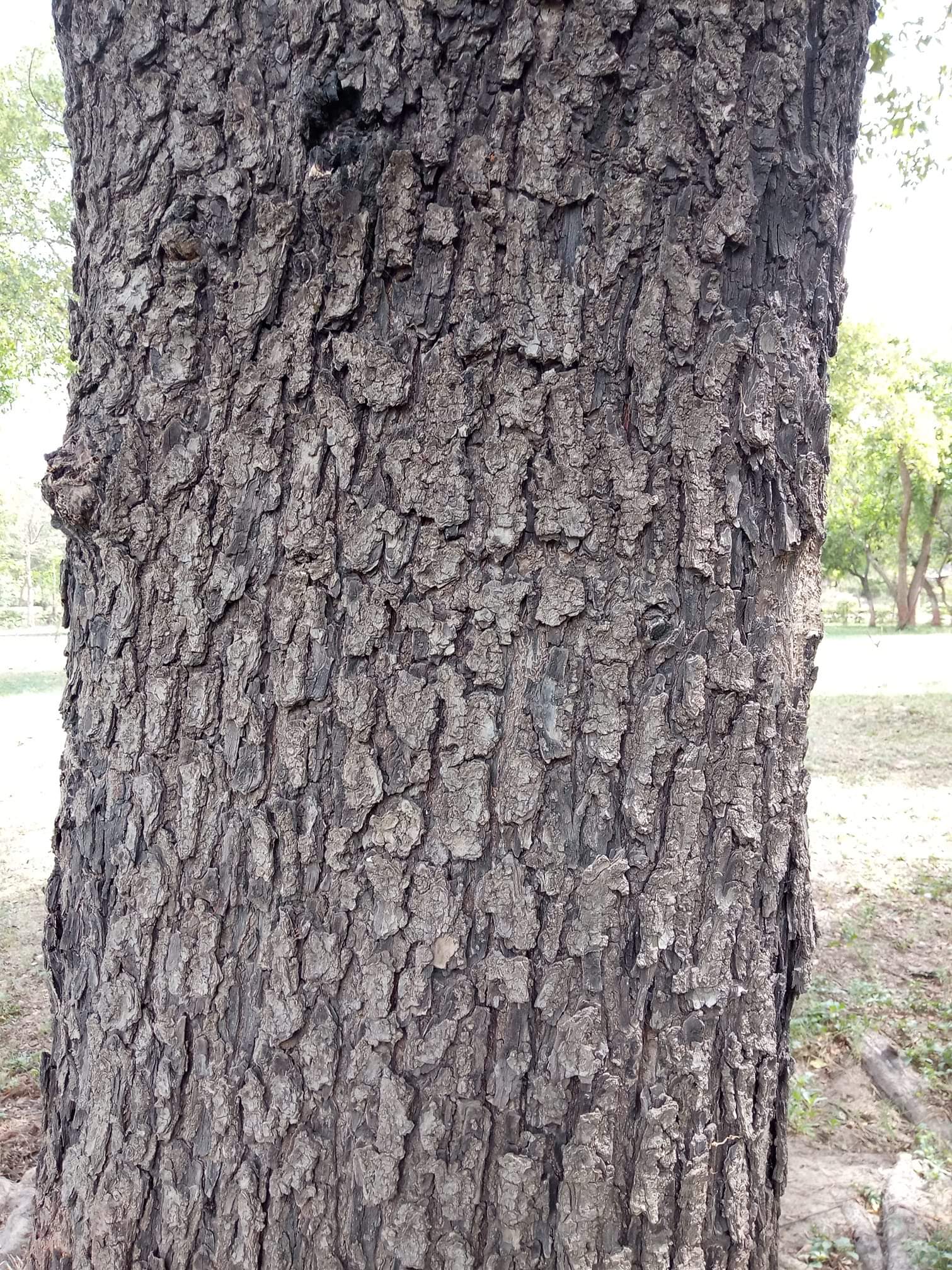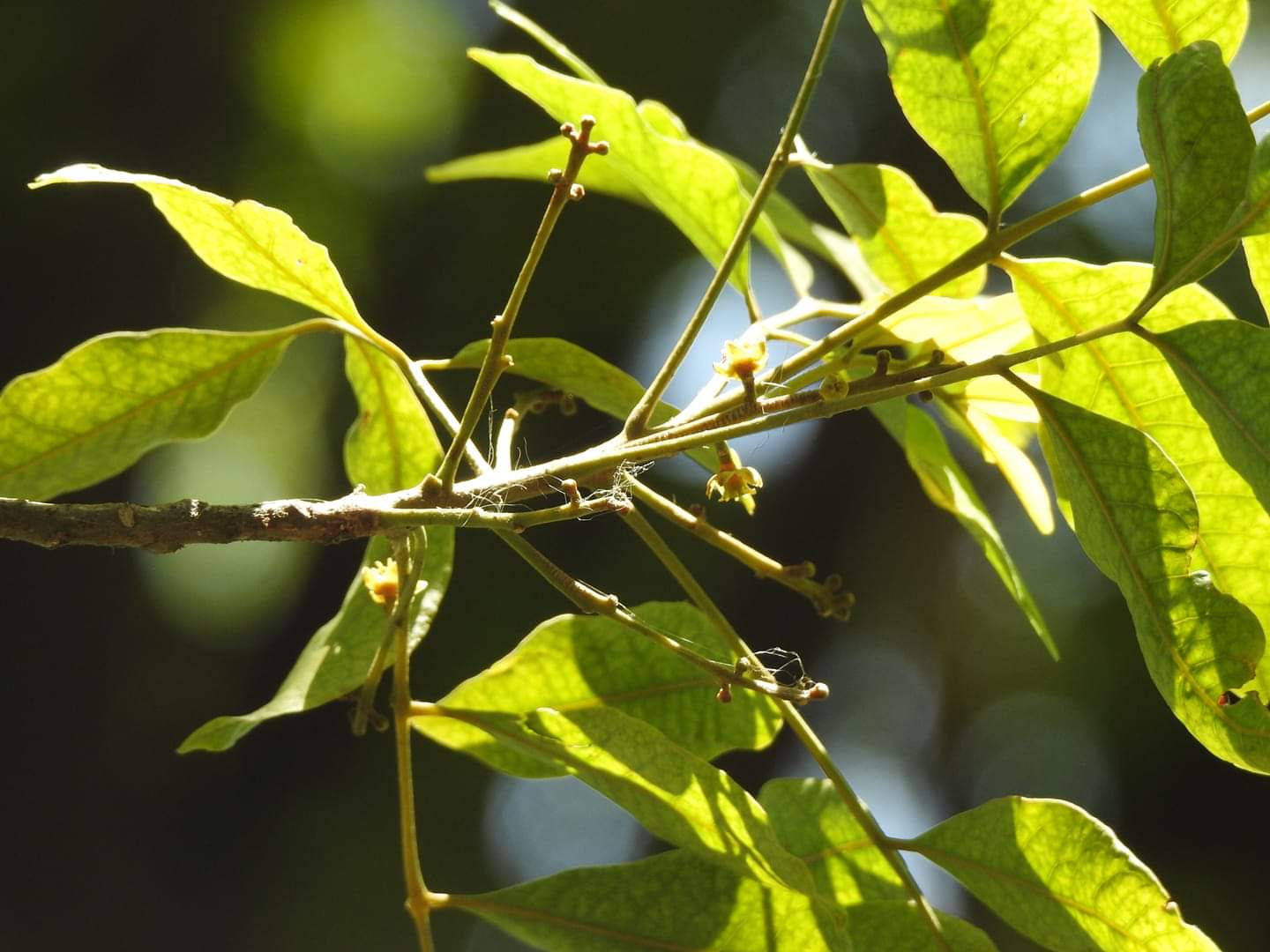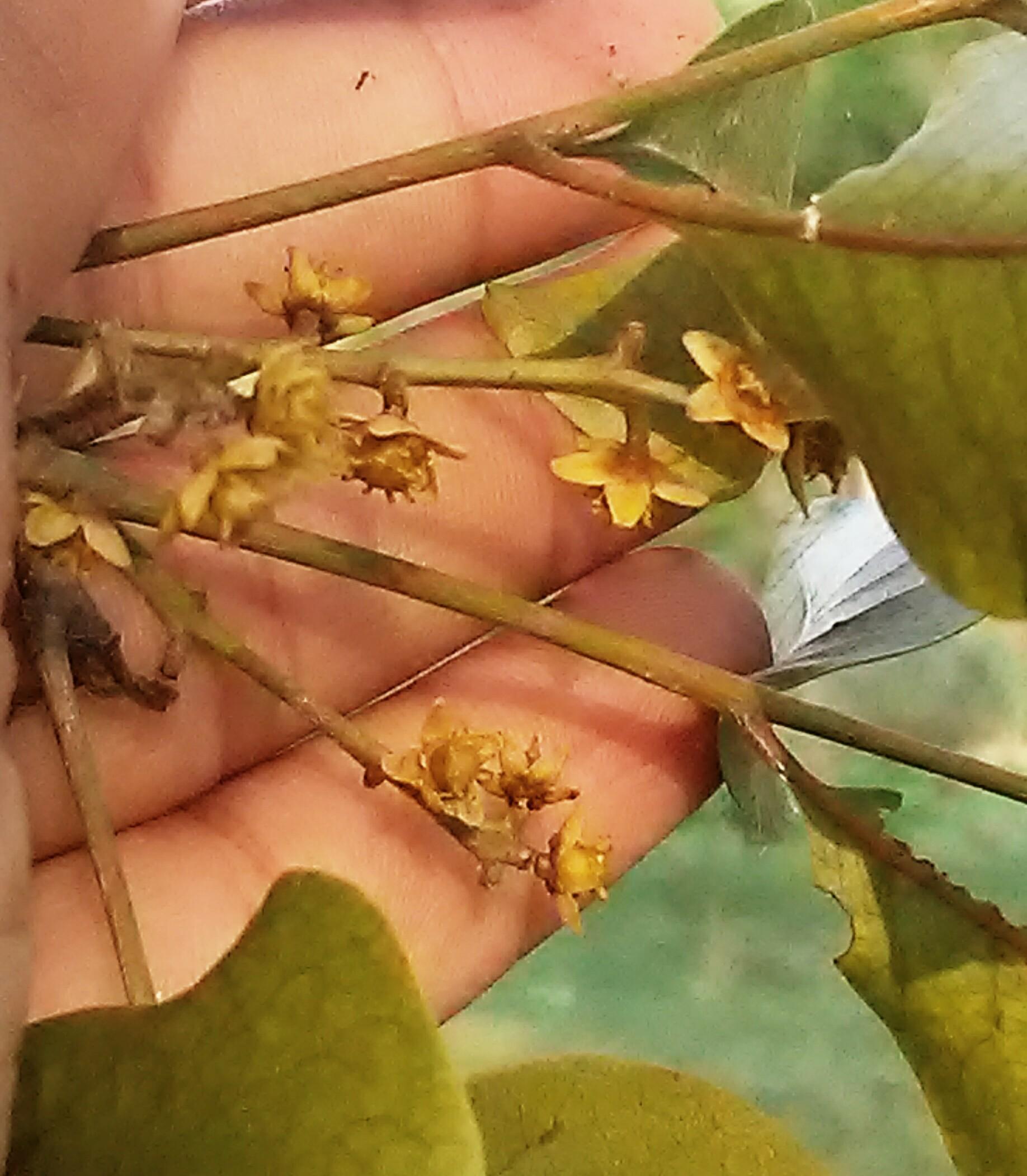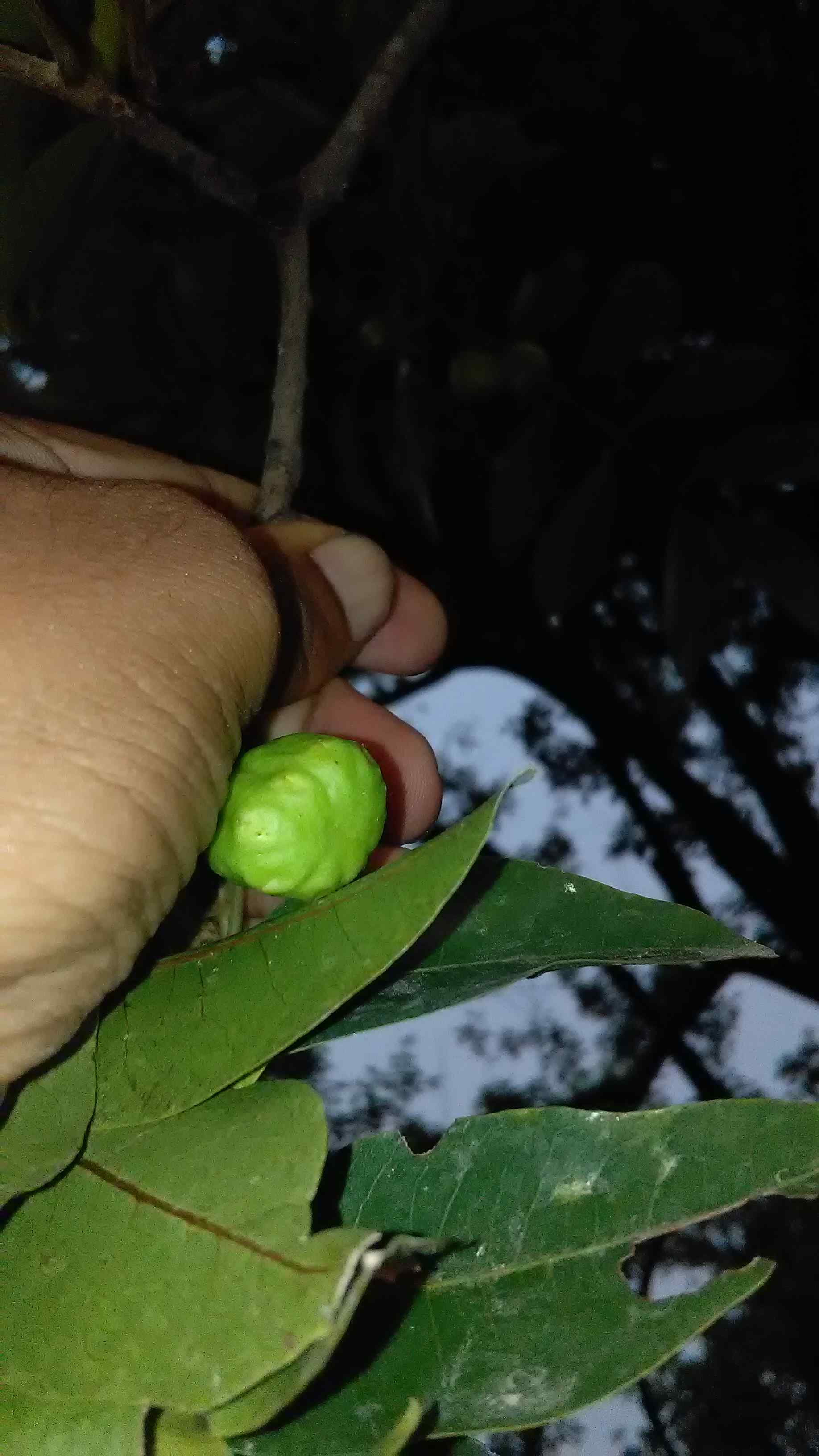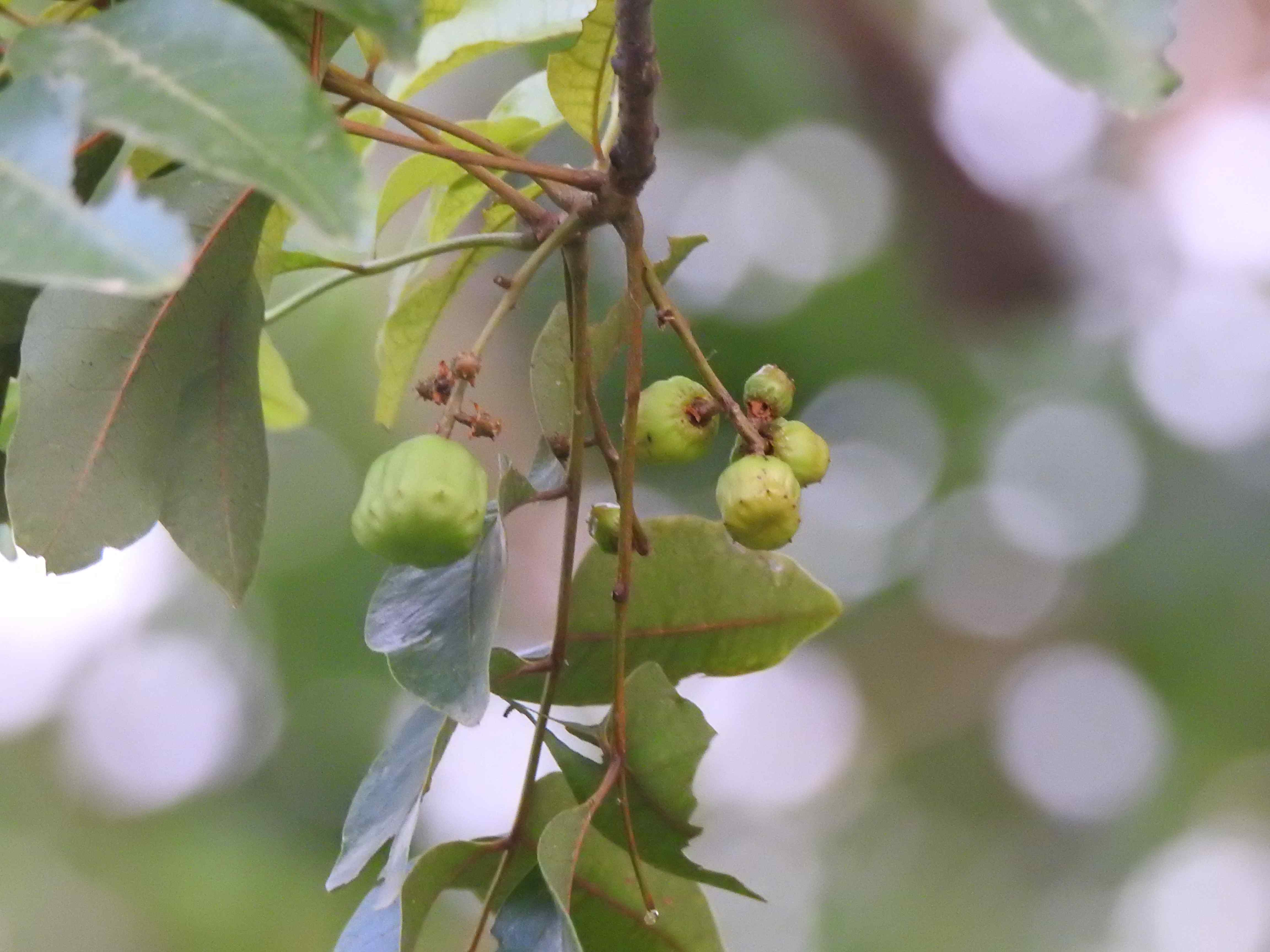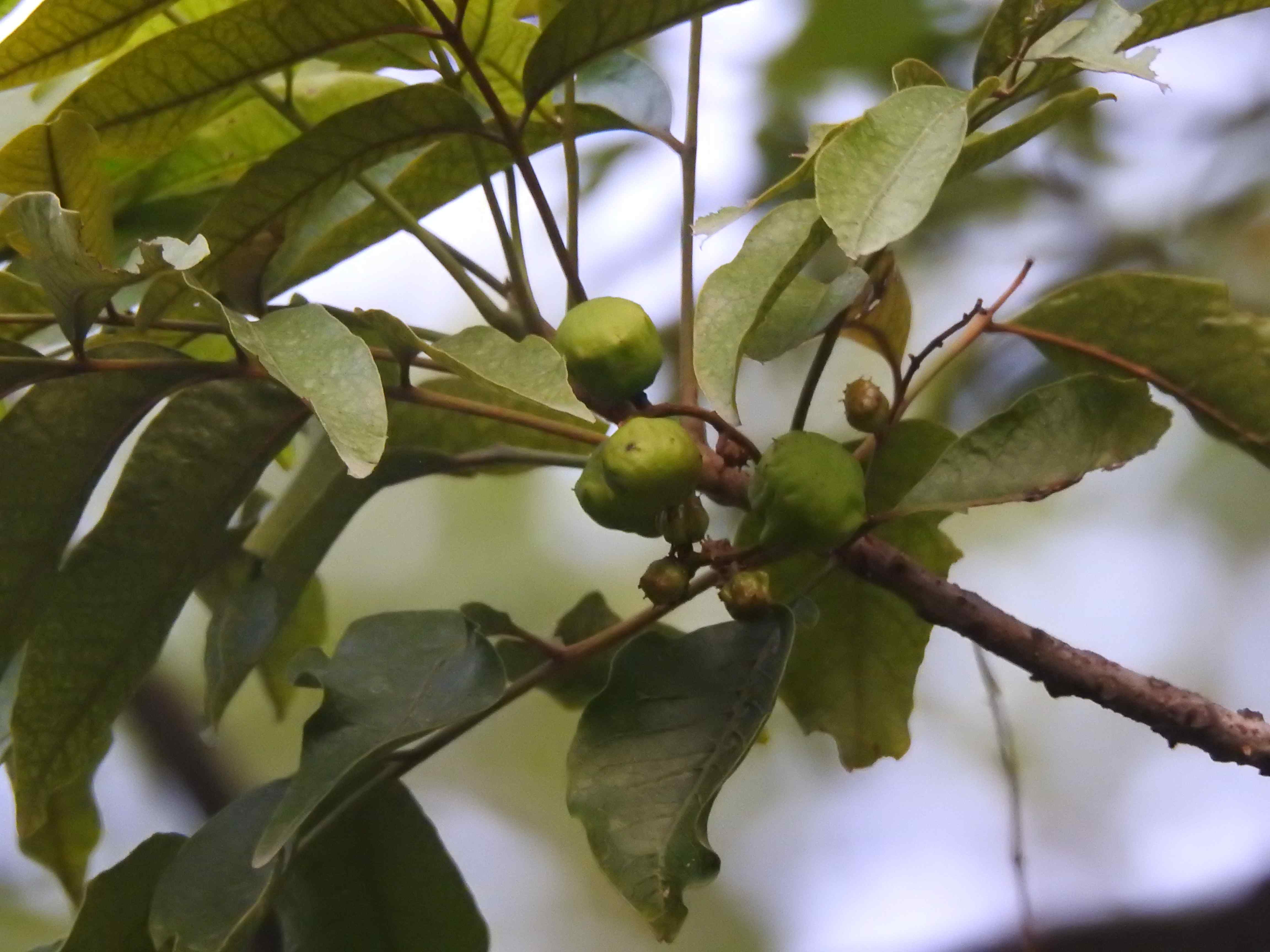|
Pleiogynium timoriense (A. DC.) Leenh., Blumea 7: 159 159 1952. (Syn: (≡) Icica timoriensis DC. (basionym); (=) Owenia cerasifera F. Muell.; (=) Pleiogynium solandri (Benth.) Engl.; (=) Spondias pleiogyna F. Muell.; (=) Spondias solandri Benth.);
Burdekin Plum;
Trees of Lalbagh, Bangalore – Pleiogynium timoriense, (DC.) Leenh. <=> Burdekin Plum Tree – RA: Large trees usually with large plank buttresses. Blaze layering fine but conspicuous. Leaf blades about 4-10 x 2-6 cm. Stalk of the terminal leaflet significantly longer than those of the lateral leaflets. elongated lenticels usually obvious on the leaf-bearing twigs. Domatia, if present, are foveoles, usually with hairs at the opening.
Calyx lobes about 0.6-1 mm long. Petals ovate, about 1.7-3.8 mm long. Stamens usually eight or ten, rarely 12 and inserted below and outside the disk. Filaments about 1.3-2.3 mm long. Styles and stigmas ten in the female flowers, styles about 1 mm long.
Fruits depressed-obovoid, about 20-25 x 20-38 mm. Endocarp hard and woody, about 1.8-2.5 x 2-3.5 mm.
Seeds about 5-12 per fruit. Cotyledons 3-veined. The hard stony remains of the fruit normally persist beneath mature female trees. Each fruit or seed kernel resembling a flying saucer with portholes around the equator.
Reference: Fact Sheet
The only thing I can say is Lalbagh garden is rich and you are doing a great work of exploring it. Keep it up!
Its a tree planted in Lawrence garden Lahore Pakistan, Someone shared its photos to me but i have no idea (i thought in first instance about Spondias pinnata but i am wrong, fruit is different). Sorry photos are not good and even not taken rightly, but can any one guess about this tree name please?
Some meliaceae member? Sir! I am not sure but one more photograph of its fruit is attached. Why this fruit reminds me of Phyllanthus acidus yellow fruit :/ ?
Are the fruits from different plant than the posted tree? No sir same tree, all photos are belonged to same tree. Some garden person sent these photos to me for identification, i didnt capture. Thank you
Just as … thinks, I too believe posted plant must be some Meliaceae member.
Leaves are compound, hence Phyllanthus can be ruled out.
OK Sir Thankyou. but i failed to find out Meliaceae member with fleshy fruit. i am just posting all photos in this mail received from a person. If not good, i will try to visit this weekend thos garden is not too far from my home.
…, the leaflets with oblique base makes me think of Meliaceae.
The small drupes seem to agree well with family’s fruits.
But I could be mistaking.
Sure Sir. I m agree with your suggestions. Thank you
I visited the garden today where the tree is planted and captured its photos. These are attached, may be they further help in identification of species. Thank you.
Attachments (13)
Thanks … I hope you will certainly get the ID soon with so many good enough photographs.
My knowledge in this case is limited to family level (and I hope I am not mistaking) … 🙂
Not sure, but does it goes near to Elaeocarpus ganitrus or some other rudraksha species? Many years back i read somewhere that there were 304 species of rudraksha in Indian Subcontinent. Only few are left now. It may be one from rare or disappeared one. Just guessing.
Guessed due to picture of this link http://www.cpreecenvis.nic.in/Database/Rudraksha_Tree_976.aspx
Thank you mam, but this link is not opening. might be issue in my network.
i just realized that i didnt anwer you in a good way, accept my apologies, sorry. i searched in flora of Pakistan yesterday and i didnt find any tree fruit matched with the meliaceae member reported from flora thats why i was saying this (perhaps the reason is its cultivated and secondly flora is not updated). You are absolutely right. I am attaching the photo of today in which the name plate mentioned about its family also, but the name is surely wrong. This tree is also planted in my univ botanical garden but i didnt observe any flowering or fruiting since last 4 years atleast (interestingly, the same name is mentioned there also Thank you so much to all members for always helping me in identifications.
Attachments (1)
Please find attached fruit image. It is not my image. Downloaded from link which posted in previous mail.
Attachments (1)
Thank you so much mam, I checked with your mentioned species but leaves are different. But as you mentioned about rudraksha seeds and fruit, these somehow resembles with my posted tree. I also cut down the stony endocarp of fruit and sharing photos to all members.
Attachments (4)
Thanks … Just matched with pictures so suggested by looking at longated stony endocarp. Experts will help in this
Thankyou so much for your help. i narrow down one name for this tree which is Pleiogynium timorense (DC.) Leenh. (An australian native tree). Could some experts support my point?
Thank you so much.
Thanks, … To me also appear close as per images and references at Pleiogynium timoriense (A. DC.) Leenh.
Thank you …! Good you got correct id.
Dear near ID of tree growing in public garden
Agra.
Date: June 2020
The present picture showing flowers is flashy and unable to see the parts properly.
Therefore, please post the picture of the flowers showing clearly the parts. Attachments (2)
I think it is late flowering stage of Mahogany…!!
Not too sure..
Flowers have resemblance to Rutaceae. Sir any chance of Soymida febrifuga ?
I could not find any match as per comparative images at Meliaceae and Soymida febrifuga
Aglaia sp.,
Possibility is there for Swietenia mahagony, leaves are oblique, it is often planted.
I think this is a species of Aglaia
It seems there is a terminal leaflet, although the pictures are not very clear. That would rule out Mahogany.
Please confirm details of the leaves.
it looks like Swetenia mahogany
Pleiogynium timorense suggested by Arun Kumar Sir on facebook looks closer experts please share your views. Thanks … Please watch out for the fruits and post pictures.
Please check images of its fruits. Attachments (3)
References:
|
Pleiogynium timoriense (Introduced)
Updated on December 24, 2024

